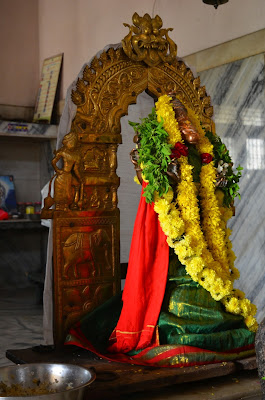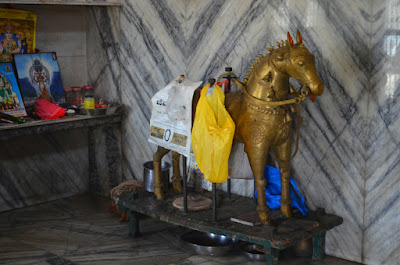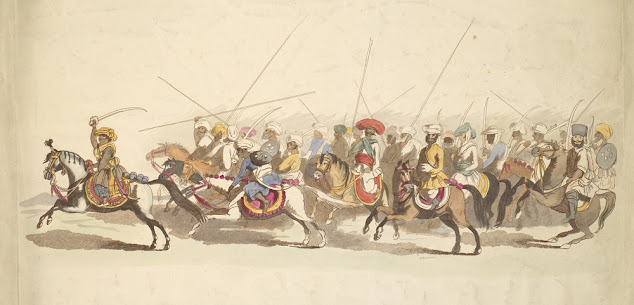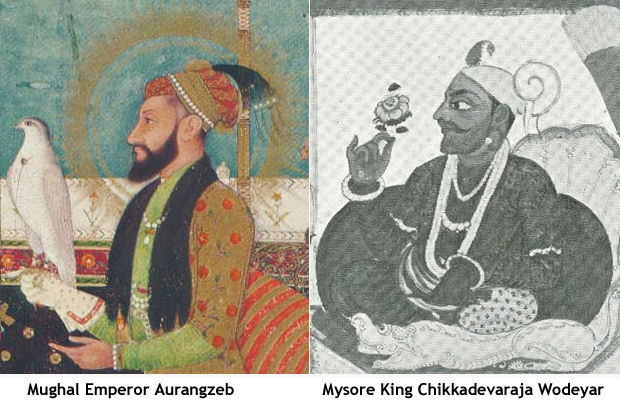Kodi Basava Temple, a landmark in Tumakuru City, Karnataka
Among the many landmarks of old Tumakuru, an important city in the Old Mysore region of Karnataka state is the Kodi Basaveswara Swamy Temple, popular as 'Kodi Basava'. Residents of Tumakuru City have fond memories of this temple particularly when the city was a small town. It is located at the south-western edge of the expansive Tumakuru Amanikere. In the days gone by it was the first landmark as one entered the town north from Sira along the old National Highway 4, before the new city by-pass was built.
I visited the temple in October 2016 and interacted with Mr. Naveen, the temple priest. According to him, this temple is the most important of all Lingayat temples in the city. He said the temple was built during the time of Sri Siddlingeshwara Swamy (1), a revered Lingayat saint in 15th century. According to legend, villagers were trying to build a 'weir' ('kodi' in Kannada). But for some reason they were unable to do so. It was decided that a human would be sacrifice to help the cause. When Siddalingeswara Swamy came to of this he came here and offered prayers to Lord Shiva and blessed the 'kodi'. Due to this, the 'kodi' could be built and the human sacrifice was averted. A temple was built on the occasion and its name 'Kodi Basava' originates from this story.
According to Mallikarjun Manjunath a local history buff, the statue of Basava usually faces towards east but in this temple it faces south towards the weir.
B.L.Rice in 'Epigraphia Carnatica'(2) states that this temple had an inscription on the Garuda stambha or the stone pillar. It dated to 1515, the era of Krishna Deva Raya, considered by many as the greatest king of the Vijayanagar Empire. The inscription on it refers to it being constructed by one Paravata-Nayaka son of Malli Setti. Unfortunately this stone pillar no longer exists.
The many ornaments it still has today were donated by King Krishnadevaraya and they are displayed during the annual festival of the temple.
The temple was rebuilt in 1991 by a city-based entrepreneur and philanthropist, as a remembrance for his parents.
Here's the text of the translation from its erstwhile stone pillar inscription, sourced from 'Epigraphia Carnatica':
'Be it well. (On the date specified), when the maharajadhiraja raja-paramesvara vira-pratapa Krishna Raya maharaya was ruling; - Malli Setti's son Paravata-Nayaka, in order that merit might be to his father and mother, erected a pillar of stone from the hillock, in front of...'
References:
1) https://en.wikipedia.org/wiki/Yediyur_Siddhalingeshwara_Swamy_Temple downloaded 4 Nov. 2016
I visited the temple in October 2016 and interacted with Mr. Naveen, the temple priest. According to him, this temple is the most important of all Lingayat temples in the city. He said the temple was built during the time of Sri Siddlingeshwara Swamy (1), a revered Lingayat saint in 15th century. According to legend, villagers were trying to build a 'weir' ('kodi' in Kannada). But for some reason they were unable to do so. It was decided that a human would be sacrifice to help the cause. When Siddalingeswara Swamy came to of this he came here and offered prayers to Lord Shiva and blessed the 'kodi'. Due to this, the 'kodi' could be built and the human sacrifice was averted. A temple was built on the occasion and its name 'Kodi Basava' originates from this story.
According to Mallikarjun Manjunath a local history buff, the statue of Basava usually faces towards east but in this temple it faces south towards the weir.
B.L.Rice in 'Epigraphia Carnatica'(2) states that this temple had an inscription on the Garuda stambha or the stone pillar. It dated to 1515, the era of Krishna Deva Raya, considered by many as the greatest king of the Vijayanagar Empire. The inscription on it refers to it being constructed by one Paravata-Nayaka son of Malli Setti. Unfortunately this stone pillar no longer exists.
The many ornaments it still has today were donated by King Krishnadevaraya and they are displayed during the annual festival of the temple.
The temple was rebuilt in 1991 by a city-based entrepreneur and philanthropist, as a remembrance for his parents.
Here's the text of the translation from its erstwhile stone pillar inscription, sourced from 'Epigraphia Carnatica':
'Be it well. (On the date specified), when the maharajadhiraja raja-paramesvara vira-pratapa Krishna Raya maharaya was ruling; - Malli Setti's son Paravata-Nayaka, in order that merit might be to his father and mother, erected a pillar of stone from the hillock, in front of...'
References:
1) https://en.wikipedia.org/wiki/Yediyur_Siddhalingeshwara_Swamy_Temple downloaded 4 Nov. 2016
2) B.L.Rice, 'Epigraphia Carnatica', Vol. 12, 1904
---
You may also like to read...
Hero, Tyrant or just another king? Shivaji's rule in Karnataka
The Kannadiga victims of Maratha Empire invasions
Persecution and massacres of Hindu Lingayats in context of religious conflict based politics
The Kannadiga victims of Maratha Empire invasions
Sexual violence and misdeeds of the Peshwa Maratha soldiers in Karnataka.
Koodli massacre- The forgotten brutalities of Maratha Empire in Karnataka
The forgotten reservations - How Brahmins survived 18th century wars in Mysore Kingdom
Victims or Perpetrators? - Nayars of Kerala in 18th & 19th century CE
How Mysore Kingdom overcame Britain’s industrial revolution inventions
The Srirangapatna uprising of 1857
When America celebrated a warrior from Mysore
Governments' lust for people's gold
















Comments
Post a Comment
Thank you for visiting this blog and sharing your thoughts.